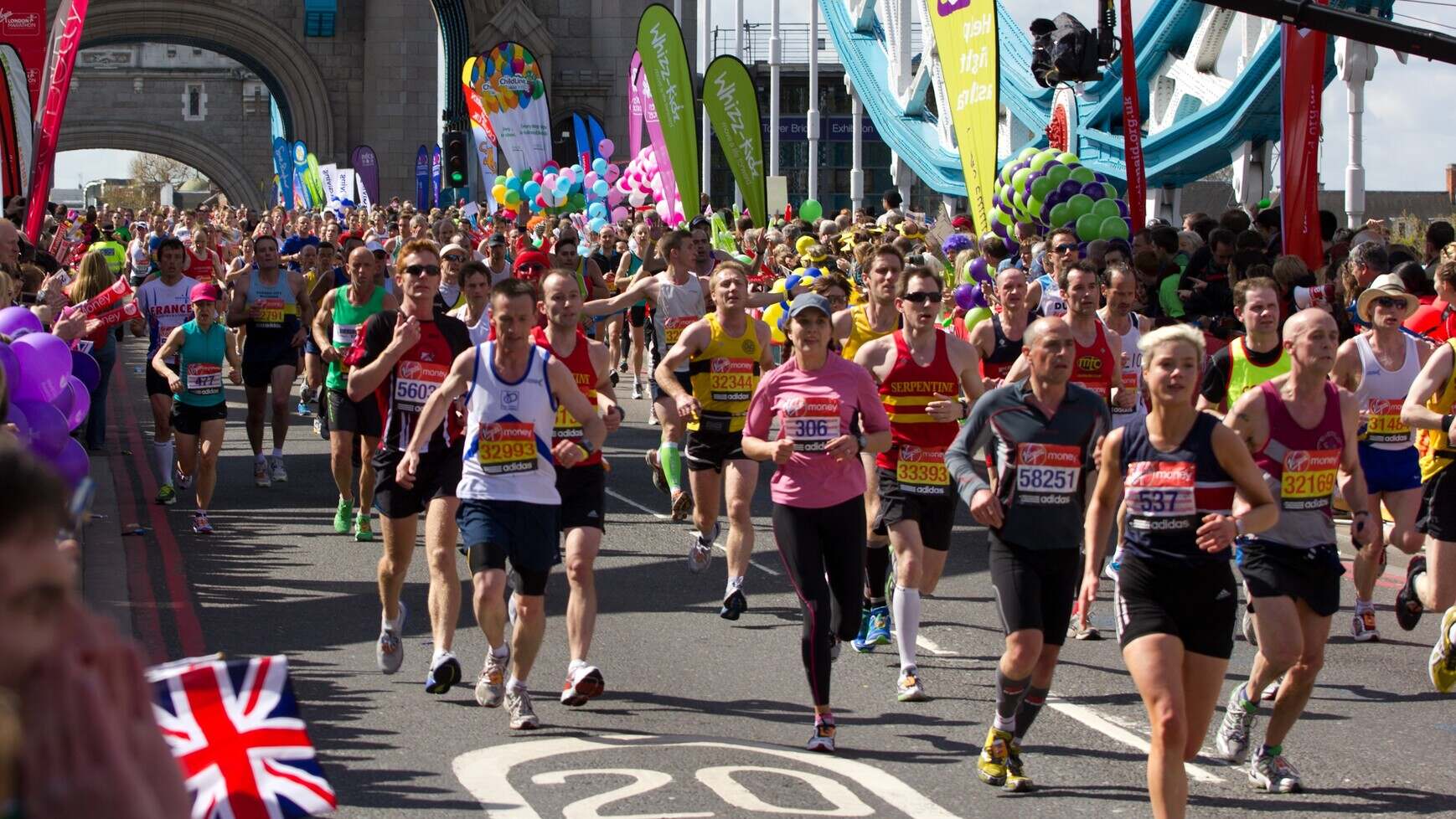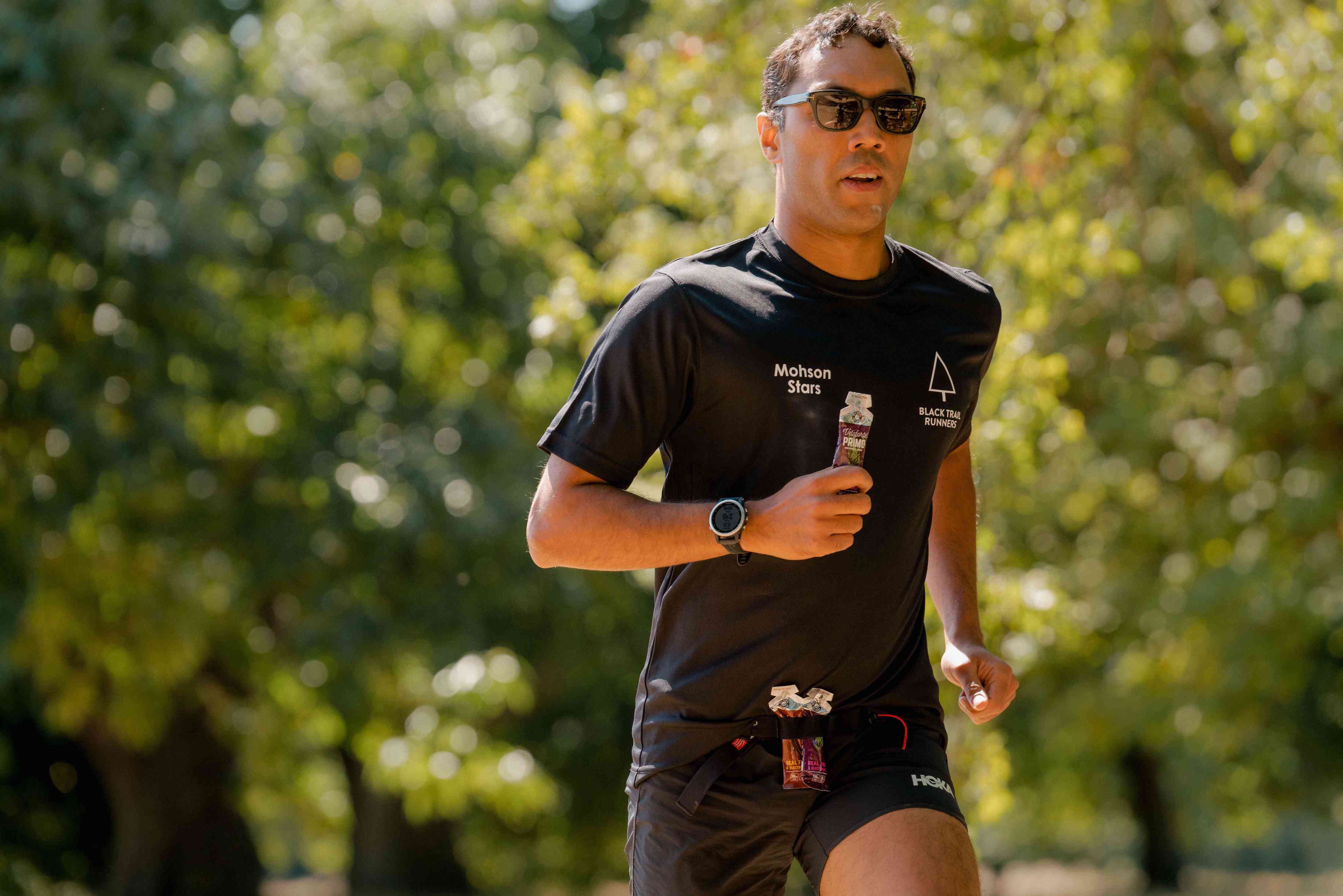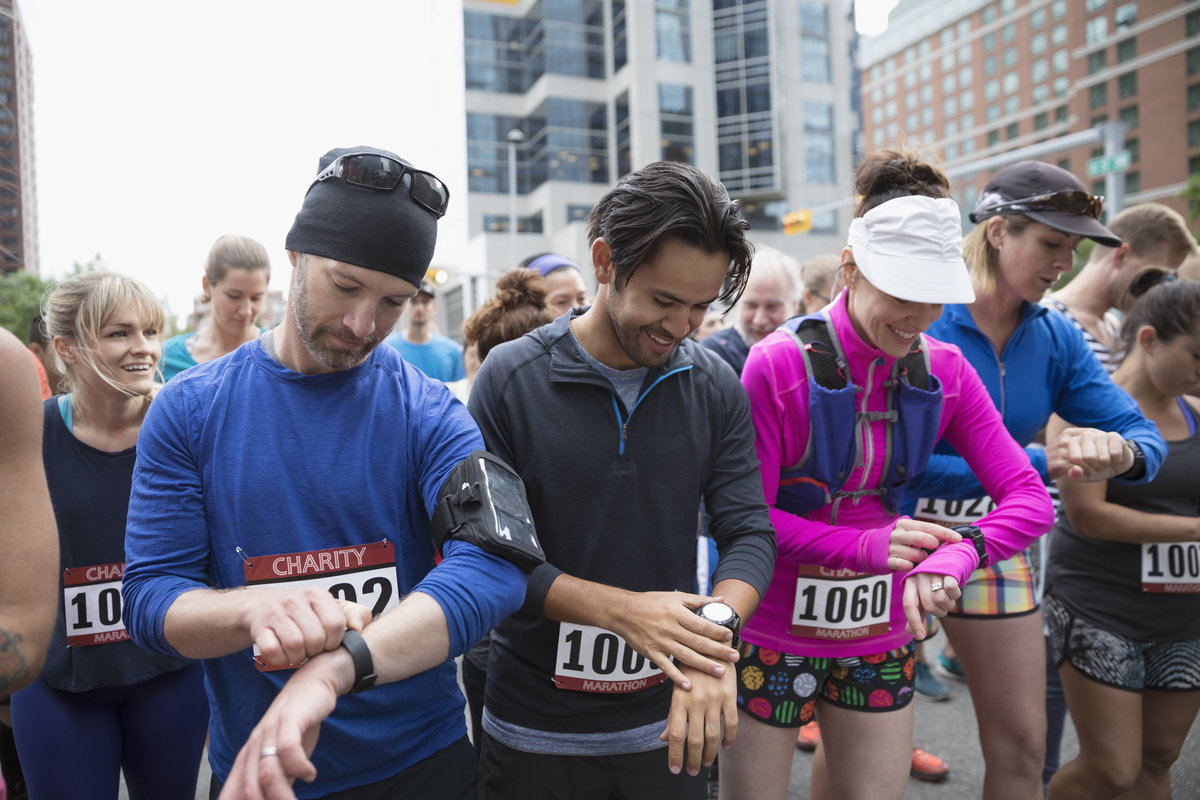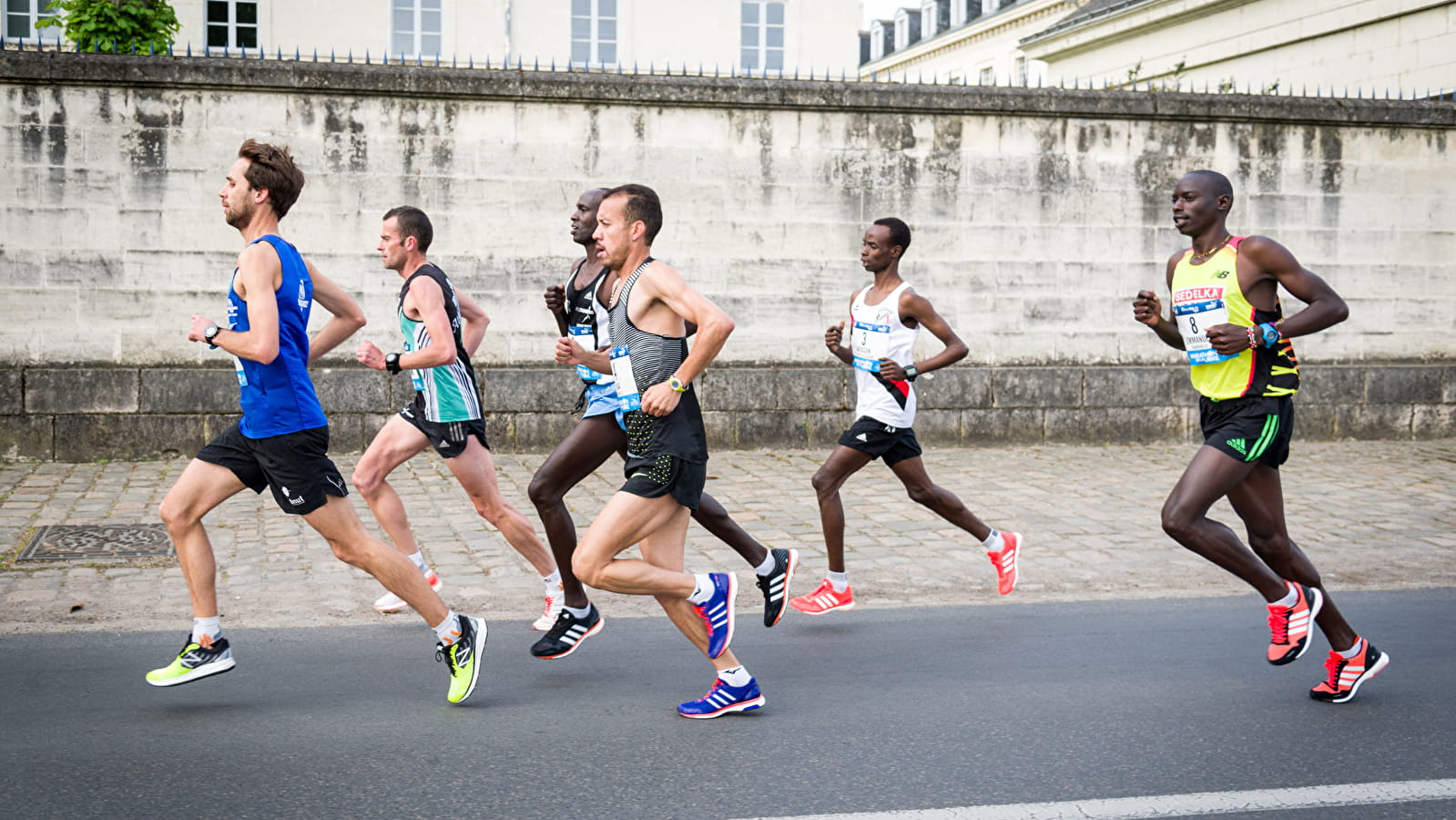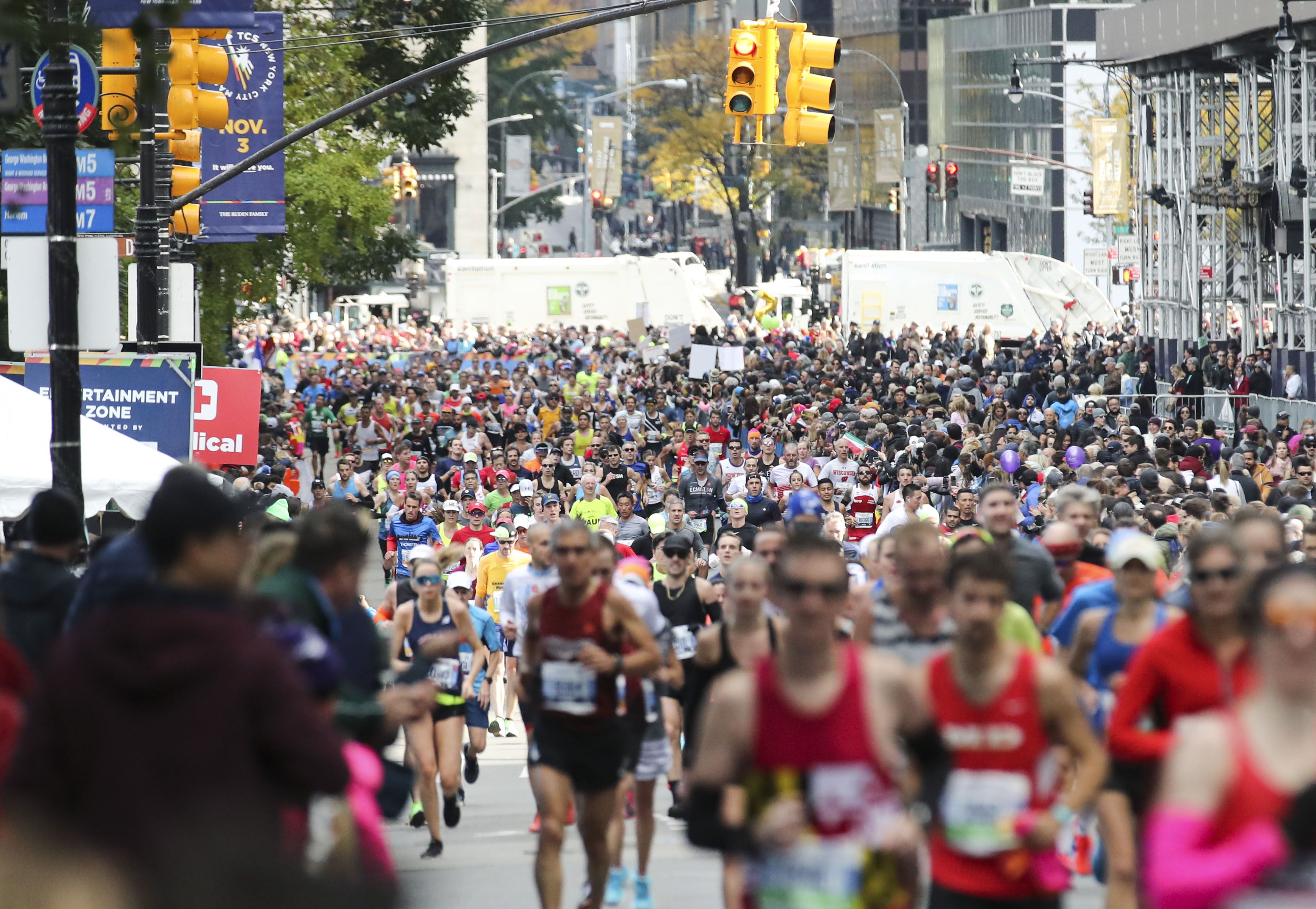Home>Misc>Featured>Long Distance Running Has Been Around For How Long
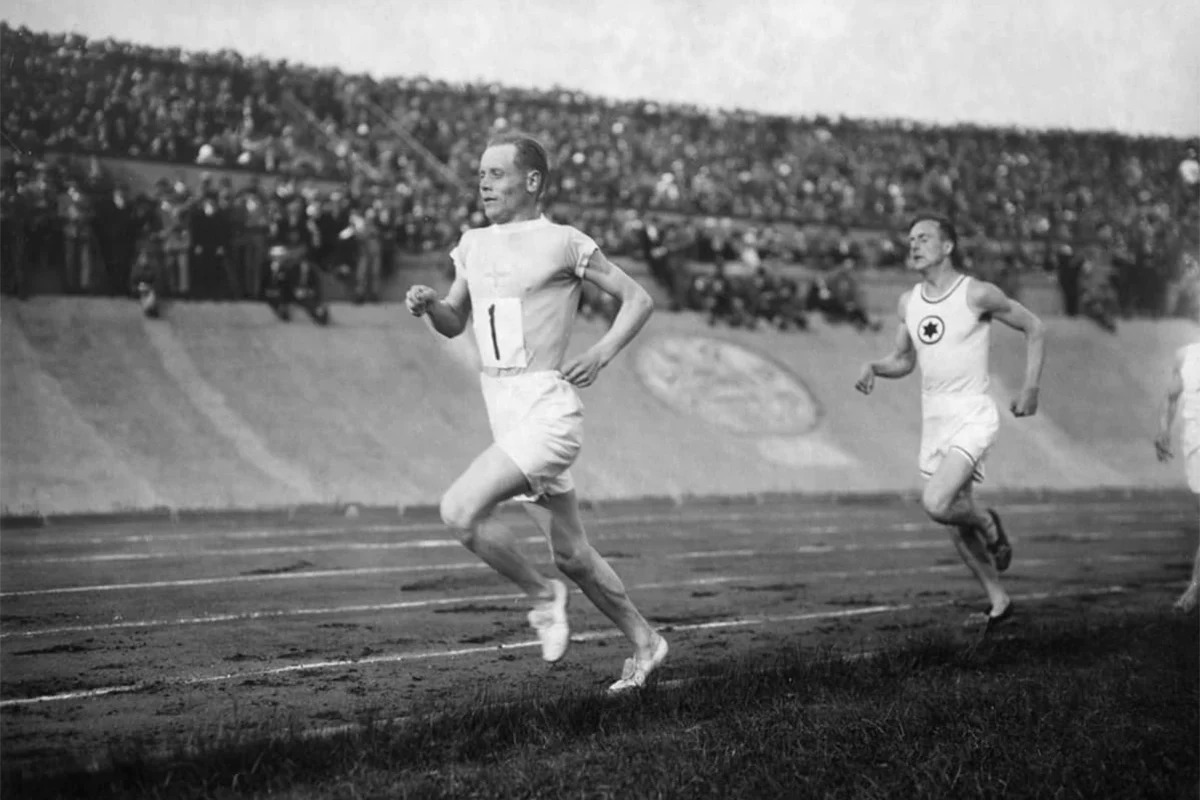

Featured
Long Distance Running Has Been Around For How Long
Modified: August 21, 2023
Discover the rich history of long distance running and how it has evolved over time. Get insights from featured experts and explore the endurance sport's enduring legacy.
Introduction
Long distance running is a sport that has captivated people for centuries, pushing the limits of human endurance and inspiring countless individuals to embark on incredible journeys. From ancient civilizations to modern day marathons, the tradition of long distance running has persisted, evolving with time and leaving a lasting impact on the athletic world.
What exactly is long distance running? Simply put, it is the act of running over considerable distances, often measured in kilometers or miles. While the exact distance may vary, long distance running typically refers to races or runs that exceed the standard length of a sprint or middle distance event.
Long distance running has a rich and fascinating history, dating back thousands of years to the origins of humanity. It served as a means of survival and transportation in ancient times, shaping cultures and leaving a legacy that is still felt today. Over the years, it has transformed into a competitive sport that attracts participants from all walks of life, ranging from casual enthusiasts to elite athletes.
In this article, we will explore the origins of long distance running, its significance in ancient cultures, its evolution over time, and the benefits and challenges that come with this demanding sport. Whether you are an avid runner or simply intrigued by the history and culture surrounding long distance running, join us on this journey through time as we delve into the captivating world of long distance running.
Origins of Long Distance Running
The origins of long distance running can be traced back to the early days of human civilization. In ancient times, running served a practical purpose as a means of survival and transportation. Our ancestors had to traverse long distances by foot to hunt for food, gather resources, or migrate to new territories.
Early humans developed the ability to run long distances as a result of natural selection. The ability to cover great distances on foot was advantageous for survival, allowing our ancestors to outrun predators and compete for resources. Over time, running became an inherent part of human nature, deeply ingrained in our genetic makeup.
One of the earliest recorded instances of long distance running dates back to ancient Greece, with the story of Pheidippides. Legend has it that Pheidippides, a Greek messenger, ran from the battlefield of Marathon to Athens, a distance of approximately 26 miles, to deliver the news of the Greek victory over the Persians in the Battle of Marathon. This remarkable feat of endurance is believed to have inspired the modern marathon race.
Long distance running also played a significant role in the communication systems of various ancient civilizations. Inca messengers, known as chasquis, regularly ran long distances along vast networks of roads to relay important messages. The chasquis were highly trained runners who could cover astonishing distances in a short amount of time.
Furthermore, the Native American tribes in North America were known for their impressive long distance running abilities. Running played a crucial role in their daily lives, whether it was for hunting, trading, or relaying messages between different tribes. The Tarahumara tribe, indigenous to the Copper Canyons of Mexico, are particularly famous for their long distance running traditions and their ability to complete ultra-marathons that span over 100 miles.
Overall, the origins of long distance running can be closely linked to the innate human instinct to survive and thrive. Running long distances allowed early humans to explore new territories, gather resources, and communicate with distant communities. These early practices laid the foundation for the sport we know today and shaped the cultures and traditions surrounding long distance running.
Ancient Cultures and Long Distance Running
Long distance running held great significance in various ancient cultures around the world. It was not just a physical activity, but a cultural practice deeply ingrained in the traditions and rituals of these civilizations.
Ancient Greece, known for its athletic prowess and the birthplace of the Olympic Games, placed a high value on long distance running. The ancient Greeks held running races as part of religious festivals, and it became an integral part of their society. The most prestigious of these races was the stadion, a sprinting race of approximately 192 meters, which symbolized the strength and endurance of the competitors.
However, it was the Olympic Games that truly placed long distance running on the global map. The ancient Olympics, first held in 776 BCE, featured various running events, including the diaulos (a 400-meter race) and the dolichos (a long distance race ranging from 7 to 24 laps around the stadium). These competitions showcased the physical prowess and stamina of the athletes, and winning a race at the Olympics was considered the ultimate achievement.
Ancient Egypt also had its own long distance running traditions. Running was part of their military training, with soldiers regularly participating in long marches and races to build endurance. The Egyptians also had a ceremonial race called the Heb Sed, which was held to celebrate the pharaoh’s jubilee. It consisted of a long distance run, symbolizing the pharaoh’s ability to rule and protect their kingdom.
Native American tribes, such as the Aztecs and the Mayans, incorporated long distance running into their religious practices. Running was seen as a way to communicate with their gods and honor their deities. The Aztecs had a ball game called “tlachtli,” in which players used their hips to propel a rubber ball through stone hoops. This game involved running long distances and required immense stamina and endurance.
Long distance running was not just a sport in these ancient civilizations; it was a reflection of their values, beliefs, and their connection with the divine. Running held spiritual and societal significance, promoting discipline, perseverance, and a sense of unity among participants.
These ancient cultures laid the groundwork for the development of long distance running as a sport and a cultural phenomenon. The traditions, rituals, and values associated with long distance running continue to inspire athletes and enthusiasts around the world.
Long Distance Running in Ancient Olympics
The ancient Olympic Games, held in ancient Greece, showcased a variety of athletic endeavors, including long distance running events. These races were highly esteemed and held a special place in the hearts of both athletes and spectators.
The stadion race, the oldest and most prestigious event in the ancient Olympics, was a short sprint of approximately 192 meters. This race tested the athletes’ speed, agility, and explosiveness. In addition to the stadion, there were several longer distance races that challenged the competitors’ endurance.
One such event was the diaulos, a two-stade race equivalent to approximately 400 meters. Unlike the shorter stadion race, the diaulos demanded more endurance and pacing. This race required the runners to maintain a steady rhythm and reserve energy for the latter part of the race.
Another significant long distance race in the ancient Olympics was the dolichos. This race ranged from 7 to 24 laps around the stadium, depending on the specific year and the preferences of the organizers. The exact distance covered in the dolichos is estimated to be between 1,400 and 4,800 meters. This grueling race tested the runners’ stamina and mental fortitude, pushing them to their limits.
Interestingly, the ancient Olympics did not have a marathon race, as we know it today. The modern marathon, which covers a distance of approximately 42.195 kilometers, is inspired by the legendary story of Pheidippides’ run from Marathon to Athens. The marathon was introduced as an event in the modern Olympic Games in 1896 to commemorate the ancient Greek history and to pay homage to Pheidippides’ storied run.
The ancient Olympic Games were not solely focused on individual achievements. They also fostered a sense of unity and camaraderie among the athletes and the spectators. Participants represented their respective city-states, and winning a race brought glory not only to the athlete but also to their community.
Long distance running events in the ancient Olympics held immense cultural and historical significance. They celebrated the values of strength, endurance, and fair competition. These races forged a deep connection between the athletes, the spectators, and the spirit of ancient Greece, leaving a lasting legacy in the world of sports.
Evolution of Long Distance Running
Long distance running has undergone significant evolution throughout history, reflecting changes in society, technology, and the mindset of athletes. From humble beginnings as a means of survival to a highly competitive and organized sport, long distance running has evolved in multiple dimensions.
One notable evolution in long distance running is the standardization of race distances. In ancient times, the length of races varied greatly, depending on the specific event and the culture in which it was held. However, as the sport became more formalized, certain distances, such as the marathon (42.195 kilometers) and the half marathon (21.0975 kilometers), were established as common race lengths. This standardization allows for fairer comparisons and enables athletes to set specific goals and records.
Advancements in training methods and sports science have also significantly influenced the evolution of long distance running. Athletes now have access to a wealth of knowledge and technology to enhance their performance. Training plans have become more scientific and individualized, focusing on aspects such as endurance, speed, strength, and recovery. The use of high-tech equipment, such as GPS watches and heart rate monitors, allows athletes to precisely track their progress and optimize their training.
In addition, the popularity and accessibility of long distance running have skyrocketed in recent years. Running events, ranging from local 5K races to major marathons, attract participants from all over the world. The advent of online registration and social media has made it easier for individuals to connect and share their running experiences, fostering a global community of runners.
Furthermore, the concept of long distance running has expanded beyond traditional road races. Ultramarathons, which cover distances longer than the marathon, have gained popularity, pushing athletes to new extremes of endurance and mental toughness. Trail running, with its rugged terrain and natural obstacles, has also become a popular variation of long distance running, allowing athletes to connect with nature while testing their physical limits.
The evolution of long distance running is not limited to the sport itself but extends to inclusivity and diversity. There is a growing recognition of the importance of representation and equal opportunities in the sport. Initiatives promoting gender equality, inclusivity for differently-abled athletes, and the involvement of marginalized communities aim to make long distance running accessible to all and inspire a wider range of individuals to participate.
In summary, long distance running has evolved from a necessity for survival to a global sport that encompasses various distances, training methods, and race types. It continues to adapt and grow, reflecting the advancements in technology, the changing demographics of athletes, and society’s evolving attitudes towards fitness and competition.
Modern Long Distance Running
In the modern era, long distance running has expanded beyond the realms of competition and become a popular recreational activity for people of all ages and fitness levels. From park runs to marathons, people from around the world lace up their running shoes and hit the pavement, embracing the physical and mental benefits that long distance running has to offer.
One of the key factors contributing to the rise of modern long distance running is the increasing focus on personal health and well-being. Running is a simple and accessible form of exercise that requires minimal equipment and can be done anywhere. It helps improve cardiovascular health, strengthen muscles, and boost mental well-being by reducing stress and releasing endorphins.
Long distance running events, such as half marathons and marathons, have gained popularity as bucket-list challenges and opportunities for personal accomplishment. These events not only provide a platform for individuals to test their endurance but also serve as catalysts for raising awareness and funds for charitable causes.
Moreover, advancements in technology have revolutionized the way modern long distance running is approached. Wearable devices, such as GPS watches and fitness trackers, allow runners to monitor their performance, track progress, and set specific goals. Mobile applications provide training plans, tracking tools, and community support, fostering a sense of camaraderie among runners.
The inclusivity of modern long distance running is another aspect that sets it apart. It embraces individuals of all backgrounds, ages, and abilities. Specialized events cater to specific demographics, such as wheelchair races for differently-abled athletes and age-group categories for older participants. This inclusivity promotes diversity and encourages more people to engage in the sport.
Furthermore, the rise of social media has created a global community of runners, fostering connections and support networks. Online platforms allow individuals to share their running journeys, seek advice, and find inspiration from fellow runners. Virtual races have also gained popularity, providing flexibility and opportunities for participation, regardless of location or schedule constraints.
In the realm of professional long distance running, the sport has become increasingly competitive. Elite athletes dedicate their lives to training, seeking to achieve record-breaking times and podium finishes in prestigious races around the world. Long distance running has become a symbol of human potential and endurance, captivating audiences and inspiring countless individuals to push their limits.
Modern long distance running represents not just a physical activity but a lifestyle. It exemplifies the pursuit of personal goals, the power of community, and the joy of pushing beyond limits. Whether it’s for health, personal achievement, or competitive success, long distance running has become an integral part of the modern athletic landscape, reaching far beyond the ancient origins that paved the way for its existence.
Benefits of Long Distance Running
Long distance running offers a wide range of physical, mental, and emotional benefits. Whether you’re a casual jogger or a dedicated marathoner, the rewards of this activity go far beyond crossing the finish line. From improving cardiovascular health to boosting mental well-being, long distance running has a multitude of advantages.
One of the primary benefits of long distance running is improved cardiovascular fitness. Regular running helps strengthen the heart, increase lung capacity, and improve circulation. As a result, long distance runners often have a lower risk of developing cardiovascular diseases such as heart attacks, strokes, and high blood pressure.
Long distance running is also a great way to manage weight and control body fat. It is a high-intensity endurance exercise that burns calories efficiently and promotes fat loss. By engaging in consistent training and maintaining a balanced diet, runners can achieve and maintain a healthy weight.
Beyond the physical benefits, long distance running has a profound impact on mental and emotional well-being. Running releases endorphins, neurotransmitters that produce feelings of happiness and reduce stress. It acts as a natural mood enhancer, helping to alleviate symptoms of depression, anxiety, and stress. Many runners report improved self-esteem, increased confidence, and enhanced overall mental clarity.
Long distance running is also a fantastic way to cultivate discipline and perseverance. Training for and completing a long race requires commitment, dedication, and consistency. The process of setting goals, sticking to a training plan, and overcoming challenges builds mental resilience and fosters a strong sense of accomplishment.
In addition to the individual benefits, long distance running promotes social connections and a sense of community. Participating in races allows runners to connect and interact with fellow athletes, forming friendships that extend beyond the racecourse. Running clubs, online forums, and charity events provide opportunities for runners to come together, share experiences, and support one another.
Long distance running also provides an escape from the demands of everyday life. It offers a chance to be alone with one’s thoughts, providing a sense of peace and clarity. Some runners find that the repetitive nature of running helps them enter a state of relaxation or meditation, enabling them to manage stress and find perspective.
Finally, long distance running encourages a deeper connection with nature. Whether running along scenic trails or through vibrant city streets, the experience of being outdoors immerses runners in their surroundings. This connection with nature can be restorative, offering a break from the modern, fast-paced world and fostering a deeper appreciation for the environment.
In summary, long distance running provides a multitude of benefits for both the body and mind. By improving cardiovascular health, boosting mental well-being, and fostering a sense of community, long distance running offers a rewarding and holistic experience. Whether you’re aiming for personal achievements, health improvements, or simply an opportunity to enjoy the outdoors, long distance running has something to offer for everyone.
Training for Long Distance Running
Training for long distance running requires a structured approach that focuses on building endurance, improving speed, and preventing injuries. Whether you’re a beginner looking to complete your first 5K or an experienced runner aiming for a marathon, a well-rounded training plan is essential to reach your goals safely and effectively.
One of the first steps in training for long distance running is gradually increasing your mileage. It’s important to start slowly and build up your endurance over time. Begin with shorter distances and gradually add on to your runs each week. This allows your body to adapt to the demands of long distance running and reduces the risk of overuse injuries.
In addition to gradually increasing mileage, incorporating different types of runs into your training routine is vital. Long runs, typically done once a week, help build endurance and prepare your body for the distance. Tempo runs focus on running at a faster pace for shorter distances, improving your overall speed. Interval training involves short bursts of intense effort followed by recovery periods, helping improve your anaerobic capacity and running efficiency.
Strength training is also an important component of long distance running. Incorporating exercises that target the major muscle groups, such as squats, lunges, and core exercises, helps improve overall body strength and stability. This, in turn, contributes to better running form, injury prevention, and enhanced running economy.
Another critical aspect of training for long distance running is adequate rest and recovery. Rest days provide your body with the time it needs to repair and adapt to the stresses of training. It is equally important to listen to your body and adjust your training if you feel excessively fatigued or are experiencing pain. Ignoring these warnings signs can lead to overtraining and increased risk of injury.
Nutrition plays a significant role in long distance running training. Proper fueling before, during, and after runs is essential for optimal performance and recovery. A balanced diet rich in carbohydrates, proteins, healthy fats, and micronutrients helps provide the energy needed for long runs and aids in muscle repair and recovery.
Lastly, mental preparation is key when training for long distance running. Developing mental toughness and resilience can help you push through tough training sessions and races. Visualization techniques, positive self-talk, and setting achievable goals can help keep you motivated and focused throughout your training journey.
Remember that every runner is unique, and it’s important to tailor your training plan to your own abilities and goals. Consulting with a running coach or seeking advice from experienced runners can provide valuable insights and guidance to optimize your training regimen.
In summary, training for long distance running involves gradually increasing mileage, incorporating various types of runs, strength training, ensuring proper rest and recovery, maintaining a balanced diet, and developing mental resilience. By following a well-rounded training plan and listening to your body, you can build the endurance, strength, and mental fortitude necessary to achieve your long distance running goals.
Challenges and Risks of Long Distance Running
While long distance running offers numerous benefits, it also presents certain challenges and risks that runners need to be aware of. Understanding these potential hurdles can help athletes navigate their training and minimize the chance of setbacks or injuries.
One of the primary challenges of long distance running is maintaining motivation and mental resilience. Training for and participating in long races requires dedication, consistency, and the ability to push through physical and mental barriers. Long training runs can be mentally monotonous, and staying motivated can be a struggle. It is important for runners to set small goals, mix up their training routine, and seek support from fellow runners to stay on track.
Another challenge is the risk of overtraining and burnout. Pushing the body too hard without adequate rest and recovery can lead to fatigue, decreased performance, and an increased susceptibility to injuries. It is crucial to include rest days in the training schedule and pay attention to warning signs such as persistent muscle soreness, recurring injuries, and extreme fatigue. Listening to the body and adjusting the training plan accordingly is key to avoiding overtraining.
Injury is a significant risk in long distance running, especially when training volume and intensity increase. Common running injuries include shin splints, stress fractures, runner’s knee, Achilles tendonitis, and IT band syndrome. These injuries often result from overuse, improper training techniques, or inadequate footwear. To mitigate the risk of injury, it is important to gradually increase training intensity, incorporate strength and flexibility exercises, listen to the body, and seek professional advice if pain or injury occurs.
Hydration and proper nutrition also pose challenges for long distance runners. Dehydration can impair performance and lead to various health issues. It is important to consume enough fluids before, during, and after runs, especially in hot or humid conditions. Maintaining a well-balanced diet, with a focus on carbohydrates for energy and adequate protein for muscle repair, is essential for optimal performance and recovery. Runners should consult with a nutritionist or sports dietician to develop a personalized plan that suits their individual needs.
Finally, external factors such as weather conditions and logistical challenges can also present obstacles to long distance runners. Running in extreme heat or cold poses risks to health and can affect performance. Additionally, managing hydration, nutrition, and equipment during races or long training runs requires careful planning and preparation.
It is important for long distance runners to be aware of these challenges and risks, as well as to take appropriate measures to mitigate them. By implementing proper training techniques, listening to the body, seeking guidance from professionals, and practicing self-care, runners can overcome these hurdles and continue to enjoy the many benefits that long distance running has to offer.
Conclusion
Long distance running has a rich and storied history, stretching back to ancient civilizations and continuing to captivate individuals in the modern era. From its origins as a means of survival and transportation to its evolution into a highly competitive sport, long distance running has left an indelible mark on human culture and athletic achievement.
Ancient cultures recognized the physical and spiritual significance of long distance running, incorporating it into their religious practices, communication systems, and as a celebration of human strength and endurance. The ancient Olympics showcased the prowess of long distance runners and laid the foundation for the modern marathon race.
In our modern world, long distance running has become a popular recreational activity and competitive sport. It offers a multitude of benefits, including improved cardiovascular fitness, mental well-being, and a sense of accomplishment. Long distance running provides opportunities for individuals of all abilities, promoting inclusivity, fostering camaraderie, and connecting people across borders and cultures.
However, long distance running also comes with its own set of challenges and risks. Overtraining, burnout, injury, and external factors like weather and logistics require careful consideration and management. By observing proper training techniques, listening to the body, and seeking professional guidance, runners can mitigate these risks and continue to reap the rewards of this demanding but fulfilling sport.
In conclusion, long distance running is a sport with a complex tapestry of history, culture, and personal achievement. It challenges the limits of human endurance, celebrates the indomitable spirit, and inspires individuals to push beyond their perceived capabilities. Whether you are a seasoned marathoner or someone considering lacing up their running shoes for the first time, long distance running has something to offer for everyone. So, go forth, explore your potential, and embrace the joy, discipline, and empowerment that come with the world of long distance running.





